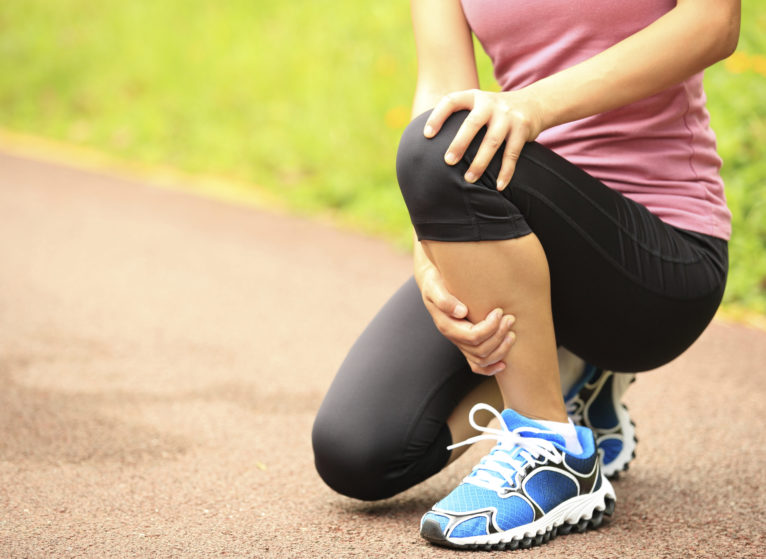Maybe your first sports injury was in high school or college. You twisted your knee, tore your ACL, or needed arthroscopic surgery to fix a torn meniscus from playing high school or college sports. After the surgery and physical therapy you felt fine, so you kept running or playing the sports that you love, and the injuries, surgeries, and physical therapy appointments kept on coming. You never thought about how this kept wearing your knees down to the point that you're considering a knee replacement.
Maybe you’ve worked in a physically demanding job since your late teens or early 20s, and now the pain from arthritis in your knees is making you consider going on disability. Going down the stairs, let alone keeping up with your kids or grandkids, is getting more difficult by the day. A knee replacement would help, but that comes with risks and time off of your feet. So what are your options?
I talked to Mark Miller, MD, the division head for Sports Medicine, to discuss alternatives to knee replacements for people in their late 30s to late 50s who are living with pain, arthritis, and damaged knees.
Knee Replacements: Q&A
According to Miller, the best age for knee replacement is age 60. Artificial knees are basically pieces of machinery. They wear out with use. The average 45-year-old taxes his or her knees much more than the average 60-year-old, so the likelihood of having one or even two or three total knee replacements increases the younger you have your first one.
If the person described above came to your practice, what kind of options would you discuss with them?
Miller: The technology and surgical practices used to treat knee pain and trauma —arthroscopy, ACL replacement, total knee replacements — have changed significantly since the 1990s. These people might think of themselves as candidates for total knee replacements, unicompartmental knee replacements —where only the medial or lateral side of the knee joint is replaced — or a high tibial osteotomy (HTO).
I think most people are familiar with knee replacements, but can you talk about HTO?
HTO is the best option if you have only one area of your knee involved and you’re too young for a knee replacement, but it’s a hard sell. It’s painful. The recovery takes three months. I’m upfront with my patients. It involves breaking the bone, cutting the tibia and taking a bone graft from the patient’s hip. You’re not on crutches the whole time, but it’s limited weight bearing. But the upside is significant: HTOs can offer 10-20 years of complete return to normal activities.
Considering knee replacement or HTO?
Having knee pain? Contact our joint specialists to see how we can help.
How do you find out if you’re a candidate for HTO?
It’s intended only for patients who have unicompartmental medial arthritis —arthritis on the inside of the knee. We take X-rays of the patient from hip to ankle so we can measure the degree that the leg is bowed and the degree of the wedge that we will have to cut in order to take the pressure off the medial (inside) side.
If you have degenerative arthritis on the lateral (outside) side or both the lateral and medial compartments, you’re not a good candidate. But if you are, you will have 10-20 years of full function, no restrictions. A total knee replacement doesn’t offer that, but the recovery from an HTO prevents many patients from considering it.
What if you’ve got arthritis in the medial and lateral compartments, or in other parts of the knee?
I’d probably not recommend you for a HTO. There are some non-surgical and surgical options. Arthroscopy when used in conjunction with repairing the meniscus can help, but it won’t cure arthritis. Steroid injections and glucosamine are also possibilities, as is hydrolaunic acid. BMP — plasma with growth factor — is an experimental procedure not covered by insurance, so it's out of reach for many patients. It’s not great for advanced cases but we do treat athletes with BMP.
How has knee surgery changed in the past 20 years?
Now we emphasize the anatomic reconstruction that was popular in the 80s. Things come full circle. The basic principles for recovery are still there. Rehab the quads doing closed chain exercise, such as leg press, cycling, or elliptical, and get your range of motion back.
We recommend that you get walking as soon as possible. Even with HTO, you’ll need to stress the bone to make it grow, and that means weight bearing when the bone starts to heal. Partial weight bearing as tolerated is part of the recovery process earlier than it was in the past. Back in the 90s there was more use of bracing and keeping weight off the involved leg, but now we know that the bone won’t heal without stressing it.
What, no painless option?
When you have these injuries there is no painless option — no pain no gain!


Good Article
I wanted to write you a little bit of remark to help thank you again with the amazing strategies you’ve contributed in this article. It was certainly extremely generous of you in giving freely what exactly many individuals would’ve offered for sale as an electronic book to earn some bucks for their own end, chiefly given that you could possibly have done it in the event you considered necessary. Those tactics in addition served to provide a fantastic way to know that most people have the identical fervor like my very own to realize significantly more with regard to this problem. I am certain there are several more pleasant situations in the future for people who view your blog post.